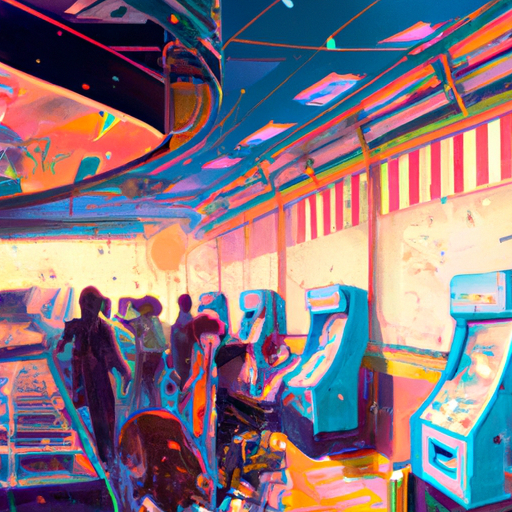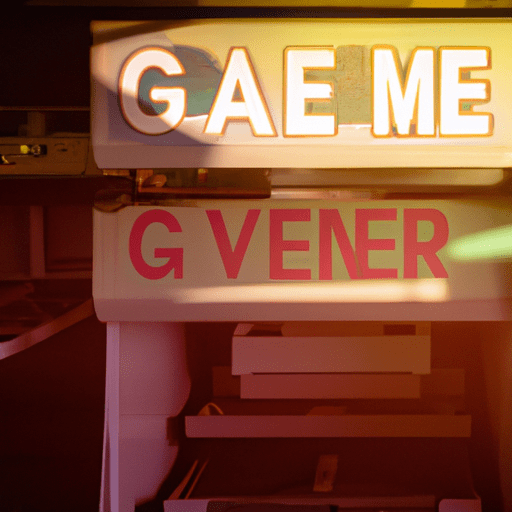This blog post takes a nostalgic journey back to the 80s, the golden age of arcade gaming. We explore the meteoric rise of arcade games, their cultural impact, and the factors leading to their eventual decline. Packed with historical insights and fascinating anecdotes, it's a must-read for any gaming enthusiast.
The Dawn of the Arcade Era: How Did It All Begin?
The 1980s marked the birth of the arcade era, a time when dimly lit rooms filled with the sounds of electronic beeps and blips became the go-to destination for gamers of all ages. It all started with the release of games like Space Invaders and Pac-Man, which drew crowds eager to test their skills and compete for high scores. These early arcade games laid the foundation for what would soon become a cultural phenomenon, captivating the hearts and minds of a generation hungry for interactive entertainment.
As technology advanced, so did the arcade games, with developers pushing the boundaries of what was possible in terms of graphics and gameplay. The introduction of games like Donkey Kong and Galaga added new dimensions to the gaming experience, enticing players with their colorful sprites and challenging levels. The arcade scene exploded in popularity, with new arcades popping up in malls, movie theaters, and even dedicated storefronts, offering a social hub for gamers to gather and share their passion for gaming.
The allure of the arcade was not limited to just the games themselves; it was the entire experience that kept players coming back for more. The flashing lights, the cacophony of sounds, the thrill of competing against friends or strangers – all combined to create an atmosphere unlike any other. Arcade games became a form of escapism, allowing players to immerse themselves in fantastical worlds and embark on thrilling adventures, if only for a few minutes at a time.

A vintage photo of a bustling 80s arcade, filled with teenagers huddled around glowing machines.
Pac-Man Fever: How Arcade Games Captured a Generation?
The release of Pac-Man in 1980 marked a turning point in the arcade gaming landscape, captivating players with its simple yet addictive gameplay and charming characters. Pac-Man's success was unprecedented, with players of all ages and backgrounds drawn to its colorful maze and the challenge of outwitting the ghosts. The phenomenon of "Pac-Man Fever" swept the nation, inspiring everything from hit songs to merchandise, solidifying the game's place in pop culture history.
Pac-Man's appeal lies in its universal appeal and easy-to-learn mechanics, making it accessible to both casual players and hardcore enthusiasts. The game's strategic elements, combined with its cute and quirky design, struck a chord with audiences looking for a fun and engaging gaming experience. As players navigated the maze, gobbling up pellets and avoiding the ghosts, they became engrossed in the world of Pac-Man, forging a deep connection to the game and its iconic characters.
"Game Over" – What Led to the Decline of Arcades?
The decline of arcades in the 80s can be attributed to various factors that ultimately led to the end of gaming's golden age. One significant factor was the rise of home gaming consoles such as the Nintendo Entertainment System (NES) and Sega Genesis, which offered players the convenience of playing high-quality games from the comfort of their own homes. As technology advanced, the allure of arcades began to wane, with players opting for the convenience and affordability of home gaming over the noisy and often expensive arcade experience.
Furthermore, the increasing sophistication of home gaming consoles allowed developers to create more immersive and visually stunning games that rivaled the arcade experience. Players no longer needed to visit arcades to enjoy cutting-edge graphics and gameplay, further contributing to the decline of the arcade industry. The shift towards home gaming also meant that arcade operators struggled to keep up with the rapidly evolving technology, leading to a decrease in the quality and variety of games available in arcades.

A photo of an abandoned arcade, with dust-covered machines and a flickering 'Game Over' sign.
The Legacy of the 80s Arcade: How Does It Influence Today's Gaming World?
The legacy of the 80s arcade continues to influence today's gaming world in a myriad of ways. The iconic games and experiences of that era have left an indelible mark on the industry, shaping the way games are developed, marketed, and played. Many of the gameplay mechanics and design principles that originated in 80s arcade games can still be seen in modern titles, showcasing the lasting impact of this golden age on the evolution of gaming.
The competitive spirit and social aspect of arcade gaming have also left a lasting impression on the gaming community. Multiplayer modes, eSports competitions, and online leaderboards all draw inspiration from the communal experience of playing alongside friends and strangers in arcades. This sense of camaraderie and shared passion for gaming continues to thrive in today's gaming culture, fostering a sense of community and connection among players from around the world.
The 80s arcade scene was a unique phenomenon, a cultural revolution that shaped a generation. Despite its fall, it left an indelible mark on the world of gaming and continues to influence modern games. The spirit of the arcade era, with its sense of community, competitiveness, and sheer joy, lives on in the hearts of those who experienced it.

